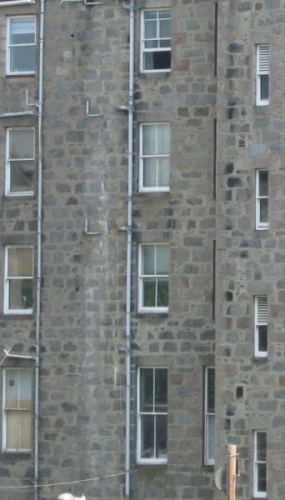By Ross Cunningham.
Aberdeen. The Granite City. As Billy Connolly once said, ‘’you could walk an elephant down Union Street and nobody would notice.’’ Such an obvious joke relating to the most prevalent colour of our fair city yet one which evokes a question in my mind: Does the greyness of Aberdeen affect it’s citizens and in what way?
Firstly, it would be helpful to assess how Aberdonians are generally perceived, both by outsiders and ourselves.
I spoke to a couple of friends, who are not from Aberdeen, about their perceptions and experiences as an outsider to the city. In both instances, they claimed that people seemed to be more reserved and not as friendly as strangers they’d met in other towns and cities, and that they were more downbeat in general. One friend also claimed that she put on two stone in weight whilst living in Aberdeen and lost it after moving to Edinburgh for university. Not the most scientifically credent experiment ever, but interesting nonetheless.
It is widely believed that colour has a definitive psychological effect on the brain
From a personal point of view, I have always found people in other Scottish cities to be more forthright and friendly compared to us granite dwellers. In Glasgow, for instance, people tend to be a lot more ‘in your face,’ perhaps because it is such a big place with a “hard” reputation that you won’t be heard unless you put yourself about a bit? Are Aberdonians more reserved because our city is smaller? Would there perhaps be other mitigating factors than just colour to consider?
It is fairly well established that being so far north causes SAD (seasonal affected disorder) due to the lack of UV light in the winter, a problem which may also lead to an increased suicide rate in countries such as Sweden.
The reduced exposure to UV may well have a profound effect on us in the north-east but I propose the whole truth may be more than that (or indeed a combination of factors) and here is why I think that.
It is widely believed that colour has a definitive psychological effect on the brain and one that is not merely limited to association. Whilst someone may grow up fearing the colour green, maybe due to a green clown scaring them during their childhood, there remains a neurological process that determines one’s response to chromatic stimuli. Red has the shortest wavelength and appears to be closer than it is, thus always attracting the attention of the Human eye first. It can signify warmth and strength but also danger and alert. It is especially useful for indicating that cars should stop at a junction.
Pink is also an interesting colour. It is used to great effect in American prisons to help calm prisoners and embarrass them into not reoffending – prison inmates have been issued with pink uniforms, thus also resulting in a lower rate of violence in the jail.
(see this link, http://www.usatoday.com/news/nation/2007-09-13-prisonpinksuits_N.htm)
Blue is a calming colour, stimulating thoughts of intelligence but also harbouring cold and unfriendly qualities. It also regularly tops polls of being the World’s favourite colour.
Yellow can be optimistic yet anxious whilst green exudes harmony but also blandness. Such contradictions may pertain to one’s mood at a particular time but once we get to the colour grey, neutrality sets in and stirs no emotion whatsoever.
In fact there are studies that conclude that the colour grey makes us want to hibernate, to withdraw and take shelter. This may be partially associative, due to the colours of winter, but an association that has obviously been around for so long that it is deeply engrained in the human psyche.
Some suggest that the evolutionary lag is 50,000 years. That is to say that a change in environment takes 50,000 years to exhibit any subsequent evolutionary biological change. Humans have been experiencing winters for a very long time now. Does a walk down Union Street, even on the sunniest of days, initiate thoughts of retreat and shelter?
Another couple of interesting links to this story can be found here
http://www.independent.co.uk/news/uk/home-news/welcome-to-aberdeen-britains-saddest-city-742073.html
And here http://www.colour-affects.co.uk/psychological-properties-of-colours

